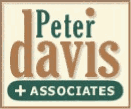
Security Industry Shakeout
Security Industry Shakeout
Configuring Cisco Denial of Service Security Features - Part 1
Configuring Cisco Denial of Service Security Features - Part 2
Dysfunctional Controls: Useless, Impractical, Inefficient and Poorly-Designed
Merger mania abounds in the security industry. It started slowly on July 29, 1996 when Security Dynamics Technologies Inc. acquired RSA Data Security Inc. It picked up steam when Secure Computing bought Border Network Technologies the following month. AXENT Technologies, Inc., not wanting to be outdone, acquired AssureNet Pathways, Inc. (formerly known as Digital Pathways, Inc.), March 26, 1997.
Security Dynamics followed-up their purchase July 15, 1997 by acquiring DynaSoft AB of Sweden, maker of BoKS, the secure single sign-on (SSSO) product. In October, firewall vendor Trusted Information Systems Inc. acquired intrusion detection vendor Haystack Labs for $25 million. AXENT must have felt flush, because on December 1, they combined with Raptor Systems, Inc. in a merger valued at approximately $250 million.
Coincidentally, on the very same day, Network Associates, Inc., officially launched as the $1.3 billion merger between McAfee Associates and Network General, announced that it signed an agreement to acquire Pretty Good Privacy, Inc. According to Network Associates's press release, they now "enter the market as the world's largest independent network security and management software company, and the tenth largest independent software company."
These mergers and acquisitions have a precedent. Study any mature industry and you'll see the same thing—three or four dominant companies. General Motors, Ford and Chrysler. Compaq, Dell, IBM and Hewlett-Packard. Deloitte & Touche, KPMG Ernst & Young and Coopers & Lybrand Price Waterhouse. So this may bode well for the security industry. This may honestly signal the start of the maturation of the security industry. As someone who tried to sell encryption equipment before its time, it's about time.
These companies undertook their acquisitions for fundamentally the same reason. They made the additions to broaden the offerings provided their customers and to create synergy amongst product lines. The timing of these purchases was excellent, filling a pressing need. Customers hunger for a comprehensive, integrated software solution for securing both corporate networks and enterprise data. They are demanding that security vendors provide multiple, integrated solutions, from user authentication to data integrity to security management. In a nutshell, customers want to simplify the information security picture with multi-platform tools that support the way they do business.
These new combined companies provide their customers great advantage. For instance, the combined AXENT Technologies can address, through the synergy of the extensive OmniGuard, Defender and Eagle product line, the full range of security challenges facing large enterprises. AXENT now has strength in multi-platform, client/server security management; intrusion detection; remote access security; single sign-on; user administration; virtual private networks; and intranet/Internet firewall security technologies. Look at the other major players and you will see a similar trend emerging.
Companies spent more money on computer industry mergers and acquisitions in 1997 than any other year to date, and competition is heating up for whatever's left over. Analysts anticipate security companies probably aren't through expanding or expending. As late as 1995, there were 50 security companies, now there are close to 600. Signs indicate the beginning of a mergers and acquisitions movement that perhaps will lead to only three to five vendors surviving to 2000. Likely acquisition targets include firewall vendors, with makers of such products as digital certificates and intrusion detection also for the taking. Network Associates, for one, still needs a firewall product. All the vendors are looking at all the other vendors looking for a fit. Ultimately, these mergers and acquisitions result in stronger companies with broader product lines—something customers have been demanding. Fortunately, I think the buyer will ultimately benefit, so don't fret when you read about the next one, remember it's for your own good.